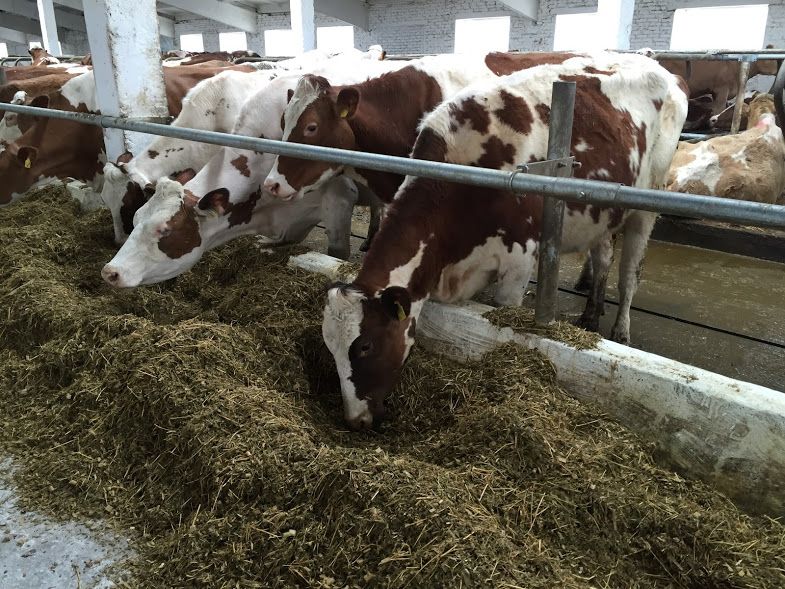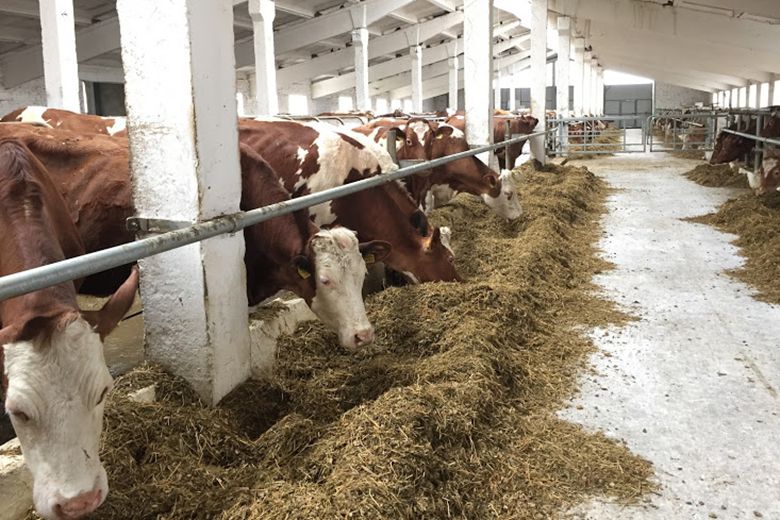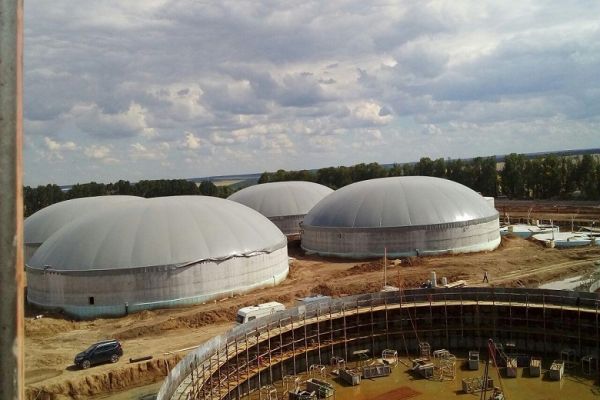Milky Rivers of Agroholdings. Dairy Cattle Breeds at MHP
Most of the publications on Latifundist.com are devoted to crop farming. At the same time, the livestock sector, in particular, dairy farming is widely represented by many holdings. And for a number of them, it is not just a social project, but rather a successful business.
In addition, the new AgroExpedition Milk 2017 is about to start. So we decided to conduct a reconnaissance battle in advance to find out what cow breeds produce milk at the leading agro-enterprises of Ukraine. Within the project “Milky rivers of agroholdings” we will hear different views on the same problem of selecting breeds for livestock farming and absolutely opposite ways of solving the set tasks. After all, dairy farming, in its essence, can not be unified.

Unlike crop farming, for this industry as a whole, there are no template schemes for growing, feeding and keeping animals that would provide a positive result in any circumstances. What works in certain conditions, can be absolutely ineffective in others. This statement is also true in terms of selecting the breed for livestock farming. We begin the series of publications about the breeds and dairy farming at Myronivsky Hliboproduct, which has almost 30 thousand heads of cattle.
General information about MHP’s dairy farming
According to the company’s data, MHP has about 9.6 thousand cows and about the same number of their replacement of different ages. Dairy farms are located in the western and central parts of Ukraine in four regions. Territorial location of the farms affected the breed composition of the livestock, ensuring its diversity.
General information about MHP’s dairy farming
- 39 dairy farms
- 1,232 employees engaged in the industry
- 6,700 kg milk yield per forage-fed cow in 2016
- 9,600 heads of cows
Currently, the cattle stock of one of the TOP-5 latifundists in Ukraine comprises of the following breeds:
- Ukrainian black-motley dairy breed — 39%;
- Ukrainian red-motley dairy breed — 25%;
- Holstein breed — 19%;
- Simmental breed — 13%;
- Jersey breed — 4%.
According to Aleksandr Belous, the chief animal specialist at MHP, this breed composition is a result of joining farms and forming their own livestock base. In the future, the breed composition of the livestock will change.
Let us get acquainted with the representatives of the dairy breeds at Myronivsky Hliboproduct and find out what awaits them in the future.
Ukrainian black-motley and Ukrainian red-motley dairy breeds. Representatives of this breed make up more than 60% of the total number of cattle at the agroholding. This breed animals are distinguished by several positive characteristics, such as a high productivity (up to 10,000 or more kg of milk per lactation), and excellent adaptive properties due to long-term breeding on the territory of Ukraine. In this case, animals are also characterized by positive meat qualities: most animals are strong and dense.
Despite a lot of positive characteristics, the number of this breed cows in the holding is planned to be reduced in the future. The main reason is that there is no high-quality genetic material of the domestic dairy breeds in the market, therefore, it is necessary to inseminate the breeding stock by Holstein bulls. In the future, specialists will also adhere to this strategy.
Holstein breed. Most animals of this breed are black and motley. There are also red and motley animals which is a recessive form. In Ukraine, there are purebred animals imported from Western Europe and America and animals obtained in local conditions by means of accumulation cross-breeding of Holstein animals with representatives of other breeds. Live weight of adult cows reaches 750 kg. Live weight of bulls is up to 1,200 kg. The height of cows is about 143-145 cm.
At MHP dairy farms, there are animals obtained by means of accumulation cross breeding. According to the company's further plans, the cattle stock of this breed will significantly increase. It should be noted that all Holstein herds in MHP have the status of breeding plants and multiplying farms.
Simmental breed. This breed is interesting because it is widespread around the world for several centuries, and is grown for dairy, combined and meat production. MHP intends to increase the proportion of these animals in the livestock structure. At the moment, red-motley herds are inseminated by Simmental bulls, not consolidated by the type of body structure, with a low proportion of red Holstein in the blood. In herds, where animals have a distinct milk type, they are inseminated by red-and-motley Holstein bulls.
On the one hand, MHP specialists prefer Simmentals for producing high-quality milk. On the other hand, Simmentals are better than the Holstein in terms of health reasons. These cows are more adapted to the new conditions, for example, to the new diet or other possible malfunctions. Animals are resistant to stress and have a longer period of productive use compared with Holsteins. Considering the fact that MHP is engaged in fattening cattle operations, Simmental bulls significantly improve the marketability when selling livestock for meat.
Jersey breed. Myronivsky Hliboproduct began growing this breed several years ago. Weak herds were not inseminated by bulls of other breeds to avoid difficulties during calving. Now they already have the second and the third generation animals in their farms.
Why is this breed interesting for the agroholding? Because of feed conversion into milk. The animals are small, the cost of maintaining the herd is less, and the productivity of milk fat and protein is quite high. The world experience proves this fact: the best farms in the world, under the appropriate conditions of feeding and keeping, receive up to 11 thousand kg of milk per lactation with 5.00% fat content and 3.30% protein content. But MHP specialists have several farms of this breed, and at the moment they do not plan to increase the cattle number.
The most popular cattle breeds among the TOP-5 latifundists of Ukraine are:
- Ukrainian black-and-motley dairy breed — 39%;
- Ukrainian red-and-motley dairy breed — 25%;
- Holstein breed — 19%;
- Simmental breed — 13%;
- Jersey breed — 4%.
MHP livestock in the future
It is planned to grow both black-and-motley and red-and-motley Holstein cattle. In this case, the specialists of the holding will focus not on the color of the animal, but on the quality of the bull and the level of productivity of its offspring. If there is a good genetic material of the black-and-motley bull-producer, the specialists will probably use them on the red-and-motley stock.
MHP livestock in the future
The specialists assume that in 5-10 years the structure of the herds will look like this:
- Holstein breed — 75%
- Simmental breed — 20%
- Jersey breed — 5%
Results and tasks for the animal productivity
According to the chief livestock specialists, their goal in cattle farming is to get 7-8 thousand kg of milk per cow per lactation with a high fat and protein content — 3.80% and 3.30% respectively. In addition, they want to extend the duration of economic use of cows at least to 4-5 lactations.
As it was mentioned above, in 2016 milk yield was about 6,700 kg of milk per forage-fed cow. According to the livestock management at MHP, it is impossible to distinguish the best single breed. Among the most productive enterprises there are farms with Ukrainian black-and-motley and red-motley dairy breeds, Simmental, and Holstein animals. After all, the farms are not unified.
The farms are different in size, applied technology, and genetic characteristics of animals. Each of them is located in different climate conditions, and the quality of forage is different as well. Much depends on the conscientiousness of the staff. At MHP there are farms with a small number of cattle. World practice shows that at small enterprises there are more opportunities to ensure the longest period of economic use of animals.
But in the current conditions of Ukraine, Myronivsky Hliboproduct consolidates dairy farms in order to increase the profitability of the livestock sector. According to this strategy, all actions are aimed at achieving the ultimate goal — obtaining maximum profit. That is why they grow such breeds of cattle (from extra-dairy to combined ones), reorganize small farms, select highly qualified personnel and constantly look for new ways to increase the profitability of the dairy farming.
We wish success to the specialists of the dairy farming industry and prepare new issues of the project Milky Rivers of Agroholdings. Stay with us, it will be interesting!
Julia Bojko, Latifundist.com







